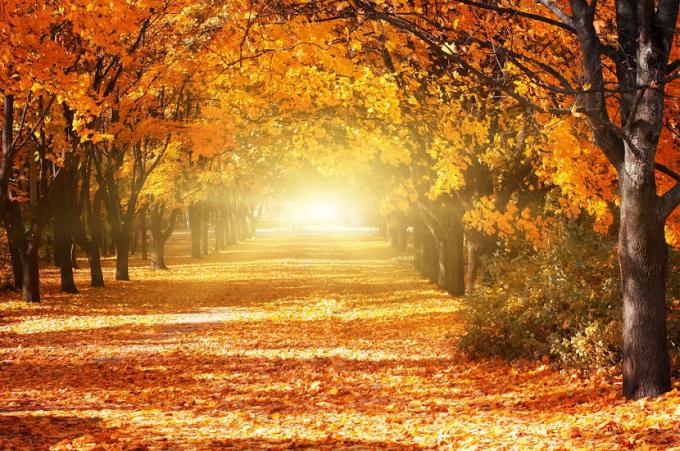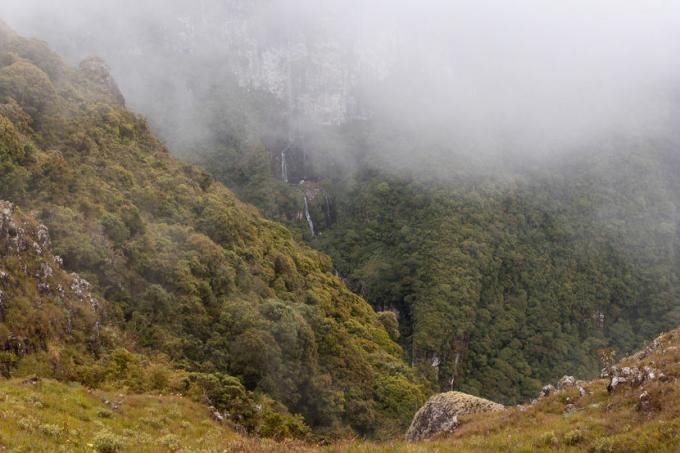autumn is the season that precedes the Winter and succeeds the summer. Thus, it has characteristics of these two seasons. It is more widely perceived in temperate and/or subtropical climate regions, in mid-latitudes, such as European countries and the south of Brazil.
Many call the autumn the fruit season, due to the fruit variety that occurs during the months of its occurrence.
Read too: What is the Earth's atmosphere like?
When does autumn start?
the beginning of autumn occurs when there is the end of summer both in the Northern and Southern Hemispheres. However, as is known, the seasons of the year in the hemispheres happen in an inverted way, that is, when it is autumn in the north, it is spring in the south, and vice versa.
In the Southern Hemisphere, autumn starts on the 20th (or 21st) of March and ends on the 20th (or 21st) of June. In the Northern Hemisphere, autumn starts on the 22nd (or 23rd) of September and ends on the 21st (or 22nd) of December.
What are the characteristics of autumn?
for being a transition station between vit was the it's winter, autumn has characteristics of changes between these seasons, being more noticeable in mid-latitude localities.
The first feature is the duration of days and nights. At the beginning of the season, both day and night have the same duration, a process known as the autumnal equinox, with equal sunlight. But as the season draws to a close, the days become shorter and the nights longer.
This feature (longer nights) is associated with the lowering temperatures, which are milder. The presence of winds increases and pluviometric indexes gradually decrease. Low humidity, reduced sunlight and increased winds cause the leaves to fall on some trees.

The transition between summer and winter is also felt in the temperature instability over the course of a week, for example. It can happen that we have very hot days at the beginning of the week and milder weekends, with lower temperatures.
Autumn in the Northern Hemisphere
In the Northern Hemisphere, autumn takes place between September 22nd and December 22nd. The characteristics of this station are better perceived in locations further away from the Equator, such as the European continent, North America and North of Asia.

These regions usually witness, in this season, the fall of leaves, mild temperatures and cooler days. Autumn is also known in the North as northern autumn.
See too: What are the elements of climate?
Autumn in the Southern Hemisphere
In the Southern Hemisphere, autumn starts on March 20th and ends on June 20th, with characteristics very similar to the autumn period of the Northern Hemisphere: shorter days, nights longer, reduced temperature, low rainfall, in addition to falling leaves in some trees.
Regions located below the Tropic of Cancer have better perception the drop in temperatures, such as Uruguay, Argentina and southern Brazil, as well as certain African countries and Oceania.
How is autumn in Brazil?
The states located further south in the country perceive the characteristics of autumn more clearly, such as the South region, São Paulo and southern Mato Grosso do Sul. However, the entire national territory witnesses changes when autumn arrives. The difference lies in the intensity of these changes, which is more significant in southern locations.
In the South and Southeast, the presence of fog during the morning becomes common in autumn and winter. there is the rsignificant reduction in rainfall throughout the Center-South (Southeast, Midwest and South) of the country, characterizing the entry of winter, a typically dry season in Brazil.

The states of this region witness a decrease in temperature, with milder days and nights (between 12 ºC and 18 ºC on average), due to the entry of cold air masses. In some mountains in the southern region, it may even snow.
It is during the autumn that the cold in Amazon, a climatic phenomenon that causes a sudden drop in temperatures across the west coast of Brazil. This phenomenon stems from the Atlantic polar mass, which enters Brazilian territory during the autumn.
In the far north of the regions North and North East, there is the beginning of the rainy season, with indexes that can exceed 700 mm.
fruit season
As autumn is known for the reduction of temperatures in some locations, this mild thermal medium is ideal for the cultivation of plants of this climate type. Thus, at this time, certain fruits are more easily found and cheaper than at other times of the year. Here is a list of some fruits that are more common in autumn than in other seasons.
- Avocado
- Banana
- Khaki
- Coconut
- Fig
- Guava
- Soursop
- Kiwi
- Orange
- Lemon
- Apple
- Papaya
- Mango
- Passion fruit
- Melon
- Pear
- pine cone
- Tangerine
- Grape



